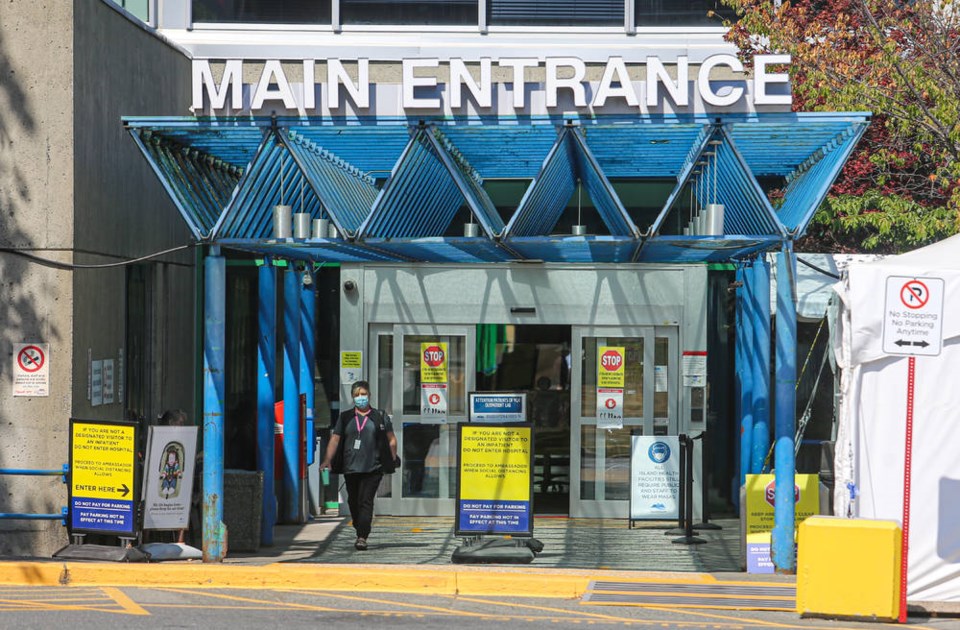A commentary by the chair of Island Health’s board of directors.
As a former nurse, a health-care leader and the chair of Island Health’s board of directors, a question which has always guided my work has been: “Is what I am doing right for the patient?”
This simple question has helped guide my decisions to be in the best interests of the people we have the privilege to serve within our publicly funded health-care system. The basic values of fairness and equity of access are at the centre of this system, yet we continue to see Indigenous-specific racism and discrimination reported again and again.
In December 2020, Island Health along with all other B.C. health authorities committed to implementing the recommendations from the In Plain Sight: Addressing Indigenous-Specific Racism report while we also extended and apology to the generations of Indigenous People who experienced harm in accessing health services.
As I reflect on the report, I also recognize people are the most vulnerable when they are accessing health care and we have a responsibility to change.
The horrifying confirmation of mass graves at several former residential schools deepened my resolve, and the board’s resolve, to ensure we address racism and create safe spaces for patients, families and care providers.
In the region we serve, there were more than five residential schools, as well as the Nanaimo Indian hospital — this is the lived experience of the people in our communities.
Island Health is committed to providing a culturally safe organization for those who are accessing, delivering or supporting the delivery of health and care. There have been multiple reports, inquiries and testimonials shared about residential schools outlining specific actions we can take as an organization.
This includes the Calls to Action from the Truth and Reconciliation Commission, the B.C. Declaration on the Rights of Indigenous Peoples Act and the actions outlined in the In Plain Sight report.
At Island Health, we have committed to these changes because we know we can no longer read reports and make commitments to change — we must act on those commitments and create change with visible actions creating systemic and lasting changes.
This is why at Island Health, we are delivering an Indigenous-specific action plan, created in partnership and guided by community.
This plan includes actions to ensure safe access to care for Indigenous people and supporting Indigenous staff and clinical staff within our health system.
It is also why the board of directors has unanimously supported the removal of the name Begbie from the building at 2101 Richmond Ave. on the Royal Jubilee Hospital site in consultation with Songhees and Esquimalt First Nations, and the First Nations Health Authority.
Words matter, and for Indigenous People place names are often associated with stories. The story of Matthew Begbie, B.C.’s first chief justice, is a story of a judge who wrongly convicted and hanged five Tsilhqot’in Nation chiefs near Quesnel in 1864, and a sixth chief a year later.
The B.C. government apologized for the executions in 1993 and the chiefs were fully exonerated with an apology from the premier in 2014 and the prime minister in 2018.
Begbie’s actions do not align with our organizational values nor tell the story of the building, which was a residence for the School of Nursing.
Instead it is a painful reminder of the layers of trauma Indigenous people continue to experience embedded within our systems.
For Island Health, this action represents a visible change as we undertake a systemic review of our programs, building names and other areas within Island Health to support Indigenous people in feeling safe when accessing our services and sites, and our Indigenous staff having a supportive environment in which to work.
In the coming weeks and months, we will engage with staff, medical staff and Indigenous partners as we look to renaming the building, to express its story of the caring and compassionate nurses — a story that aligns with our organizational values.
I acknowledge and am grateful to the Lekwungen peoples of the Songhees and Esquimalt First Nations on whose traditional territory I live. I also acknowledge my history and my responsibility for reconciliation.
- - -
To comment on this article, email a letter to the editor: [email protected]



